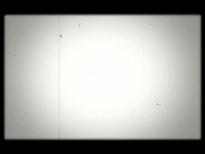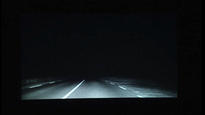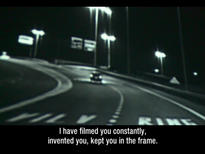MICHEL LORAND - 3 SHORT STORIES
EXHIBITION
In 3 Short Stories, Michel Lorand presents work completed over the last two years. The exhibition includes a video installation, Medea, centrally placed in the exhibition space, and three short video films, Cut, Camera Obscura and Epilogue, shown successively and continually in the projection room. Although the title of the exhibition may suggest otherwise, Michel Lorand is presenting four, not three, autonomous works. His reference to ‘3 stories’ can be explained from two perspectives. Epilogue can be seen as the conclusion of the trilogy of Medea, Cut and Camera Obscura , but one can also say that Medea is a prologue to the three films that followed it. In either case, in terms of both theme and form, the four works are strongly interrelated.
The Medea (2004) installation, premiered last year at the DeBuren centre in Brussels, is made up of a large, square table with four video monitors. A single actor or actress is seen on three of the four monitors, from the waist up and frontal. The fourth monitor shows only text. The starting point is a short prose piece written by Lorand about a young woman intending to kill her two children after the end of her relationship with their father. Lorand’s own interpretation of the Medea myth is written out in four variations: one for each of the four ‘voices’, the four monitors in the installation. Here, the multiplicity of voices and role distribution do not take place at the level of the story itself, but at that of its production, interpretation and reception. A different participant in this process is speaking through each of the monitors: author, director, actress, member of the audience. The four versions of the text distinguish themselves from one another through the use of various grammatical persons and times, a means of indicating that each of the four protagonists relates differently to the drama to be produced. The viewer can observe the installation from a distance, or can take a seat in one of the chairs at the side of one of the four ‘personages’. If he wants to, he can also follow the text, which is also on the table in printed form.
Medea does not show us the interpretation of a work of dramatic prose. It is not a representation, but sooner the representation of (leading up to) a representation. The actors are perhaps playing a role, but in the second degree: the actress playing an actress, the author an author… This kind of double-sidedness, whereby the viewer is intentionally kept at a distance, is a procedure that Lorand picks up again in the three shorter films, but now in a more ‘literal’ way: all three came about by way of the refilming, with video and usually shot over the shoulder, of a video or film projection.
Cut takes us along a slow, nighttime journey through the outskirts of a city, over a heavily travelled highway network. Only at the end do we get a fleeting glimpse of a man, lonely, but walking determinedly along the side of the road. Because of the way they were created, the black-and-white images are unsteady and out of focus, wobbly and deformed, so that the whole is virtually abstract. In the meantime, we hear a woman’s voice telling about a relationship that she had for seven days and seven nights with a Western man, in her native city, Shanghai. The whole becomes a kind of road movie with three protagonists: She, He and the City. The title of the work refers both to essential operations in the cinematographic process – the breaking off of a registration, cutting film during editing – and the break between the characters in the story.
For Camera Obscura, Lorand made a nighttime recording from a moving automobile, along an empty and unlit road, projected the dark images against a wall and filmed them again with a hand held camera. In a single, quiet motion, the camera zooms in on the projection (we initially see it reflected on the shiny floor of the space) so that we viewers are drawn into the image in a kind of illusion of infinity. We hear a young girl and an older woman reading aloud a suggestive text about light and dark, seeing and being seen. The two voices are not in dialogue. Perhaps it is the same character at different stages of her life.
Finally, Epilogue begins with the technical introduction, the classic ‘countdown’ seen at the start of movies. The title then appears, followed by a white film, devoid of image. It is a blank film, but not clean. A woman’s voice reads out a claustrophobic text about memory and remembering. The sequence then runs for a moment in silence, followed by a clear break and then black.
For Michel Lorand, the Medea installation is something of a declaration of intent. Seen in retrospect, the work appears as a set of building blocks or worktable in or on which all the elements are already at hand, elements that will again be investigated, illuminated and unfolded in subsequent works. These later works, moreover, do not have to take the shape of a film. Indeed, both Cut and Camera Obscura were initially presented at argos and Het Kabinet in Ghent, respectively, in the form of space-filling installations.
There are indeed a number of recurring themes indicated in the four works. Each begins with a text written by Lorand; there are women speaking in each; and the ‘story’ is about a break or separation, either inner or relational. There is, by the way, always a decisive beginning and end, as Lorand emphatically does not present his work in loops, and there is the repeated play with the contrast between white and black, light and dark. All the characters – or should we say voices? – seem trapped in the same kind of powerlessness: the inaccessibility of the here-and-now life experience, the impossibility of the meeting with the other … In Epilogue, perhaps Lorand’s most intimate text, we learn a little about the source of this diffuse discomfort: how do we live with the debris of the past we have never worked through, among all the unfulfilled longing and undigested ruptures that make us who we are? The white of the epilogue does not refer to purity or emptiness: it is the blinding whiteness of overexposure and over-saturation.



-
Sat 10.12.2005
- Sun 15.1.2006
-
Practical info
Location:
argos
Opening hours:
Tuesday to Saturday, 12:00 to 19:00
Entrance fee:
free - Artists
- Works